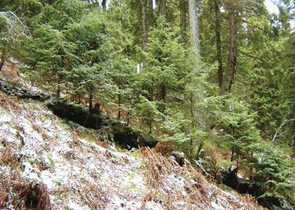Nature Conservation 1/2008 — 26. 2. 2008 — International Nature Conservation
Natural Processes, Disturbances and Forest Management in the High Tatras National Park, Slovakia
disturbancie a obhospodarovanie lesov TANAP-u

Udalosti okolo následkov víchrice z novembra 2004 v Tatrách rozvírili diskusiu o prirodzených procesoch, úlohe disturbancií lesných ekosystémoch a o starostlivosti o lesy v TANAP-e. V mojom článku sa pokúšam o pohľad na danú problematiku z pozície medzi ekológiou lesa a ochranou lesa.
One of the key drivers, influencing forest development, is disturbances. They are related to individual trees as well as whole mature stand dieback. Small-scale disturbances initialize regeneration processes, particularly those of the tree component of forest ecosystems. Disturbances, from the specific size and intensity, initialize forest succession. The pioneer tree species form suitable habitats for climax tree species regeneration and growth incl. chemical patterns in soils. Component of each ecosystems have been adapted to the specific disturbance regime. Impairing the disturbance regime can affect forests. Natural disturbance restore series of the equilibrium in ecosystems, ecosystem health and landscape diversity. On the other hand, disturbances to which ecosystem have not been adapted yet have mostly negative affects. Naturally developing forest ecosystems are directed at optimal ecosystem integrity and to optimal health. The more are natural processes affected by human interventions, the more often large-scale disturbance occur within an ecosystem. The validity of the above patterns can be demonstrated by the example of the High Tatras National Park (Slovakia). In November 2004, the windstorm most strongly affected the forest growth which had been influenced by human-induced disturbances (artificially established Norway Spruce Picea abies monocultures). Similarly, the current large bark boring insect outbreaks are to a great extent related to human-induced disturbances.
Název připojené galerie
Quisque egestas velit non nulla fermentum, aliquet pharetra nunc malesuada. Nullam molestie vel diam non tincidunt. Sed pulvinar lacinia nunc et consectetur. Duis varius leo ac ex scelerisque, ullamcorper eleifend massa consectetur. Nullam in metus ac arcu pellentesque venenatis ac id lorem. Nulla nec ipsum sed enim sodales blandit a sit amet ex.




